Mallorca Weather: The Ultimate Guide from January to December
Hello and welcome to our ultimate guide, providing a comprehensive insight into the Mallorca Weather from January to December. Whether you’re planning a trip to this picturesque island or simply curious about its climatic conditions, you’ve come to the right place.
In this article, we take a detailed look at the weather in Mallorca, whether you’re travelling in the spring-like March or the sun-soaked August. We’ll also address a frequently asked question: Is there a bathing ban in Mallorca during certain months? We’ll provide all the necessary information to ensure you can enjoy your beach visit without any unpleasant surprises.
Furthermore, we dive into the specific weather conditions of some of Mallorca’s most popular locations. Learn more about the Mallorca weather in Alcudia , a place renowned for its long sandy beaches and family-friendly atmosphere. We’ll also explore the weather in Cala Millor, an ideal destination for sun worshippers and nature lovers. And let’s not forget Peguera, a charming coastal village whose weather we’ll examine in detail.
Get ready for a weather journey through Mallorca, from the cool but pleasant winter days to the hot, vibrant summer months. Whether you’re a sun seeker, an avid hiker, or simply an island enthusiast, our Mallorca weather guide equips you with all the information you need to make the most of your Mallorca adventure!
👉 AUFGEPASST: Hire Affordable Car Seats or a Rent a Pram in Mallorca with RentalPanda!
Mallorca Weather: January
The weather in Mallorca in January offers a gentle start to the new year with a touch of winter that feels distinctly milder than many other European regions. While the first month of the year is considered a winter month on the island, temperatures are relatively mild compared to much of Europe.
In January, average temperatures in Mallorca typically range between 8°C during cooler mornings and reach highs of around 15°C during the day. These temperatures are perfect for pleasant walks along the beaches or through picturesque villages without the intense heat of high summer.
However, January can also show its wetter side. It is one of the rainier months in Mallorca, though the rainfall, with an average of 5 to 6 rainy days per month, is not excessive. This means there are still plenty of sunny days to explore the island, but it’s wise to keep an umbrella or waterproof jacket handy.
👉 Mallorca Family Holiday with Kids!: Die besten Ausflugsziele und Aktivitäten!
Hikers and nature lovers will find January ideal, as the milder temperatures are perfect for outdoor exploration. The landscape is particularly vibrant after occasional rainfall, with blooming almond trees offering a spectacular sight towards the end of the month.
Overall, the weather in Mallorca in January provides a refreshing break from colder winter climates, with pleasant temperatures inviting you to explore the island’s diverse landscapes and culture, though with occasional rain and cooler nights.
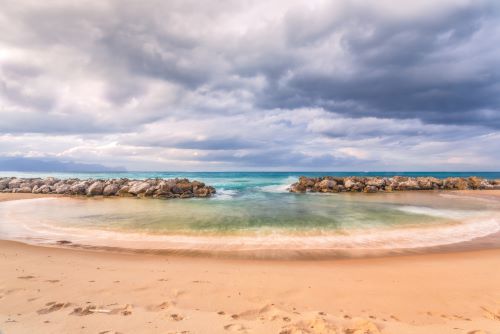
Mallorca Weather: February
The weather in Mallorca in February continues the mild winter season, with the island slowly preparing for spring. February temperatures are similar to January’s, with slight increases that create an even more pleasant climate for outdoor activities. Daytime temperatures average between 8°C and 17°C, making the island an attractive destination for those escaping colder winters elsewhere in Europe.
One of Mallorca’s highlights in February is the almond blossom, transforming the landscape into a breathtaking sea of white and pink. This natural beauty attracts visitors specifically for this spectacle, offering stunning photo opportunities and a chance to see the island in a unique light.
👉 The 10 Best Tips for Your Family Holiday in Mallorca!
Though February is one of the cooler months, Mallorca enjoys a considerable number of sunshine hours, meaning longer days for exploration. The sun shines for around 6 hours per day on average, giving you plenty of time to enjoy the island’s diverse landscapes and cultural attractions.
Rainfall in February is similar to January, with an average of 5 to 6 rainy days per month. These showers contribute to the island’s freshness and vitality but are rarely intense enough to disrupt extended outings. A light umbrella or waterproof jacket is recommended to be prepared for unexpected showers.
In summary, the weather in Mallorca in February is mild and refreshing, with the unique natural beauty of the almond blossom stealing the show. It’s ideal for outings with a rental car (Mallorca: Car Child Seat Mandatory) and perfect for visitors who want to enjoy the island’s quieter atmosphere and explore its cultural and natural attractions without the high-season crowds.
👉 AUFGEPASST: : Check the water temperature in Mallorca, or explore The Ultimate Mallorca Map - at RentalPanda!
Mallorca Weather: March
The weather in Mallorca in March marks a gentle transition from the cool winter season to the warmer spring, transforming the island into a paradise for holidaymakers and explorers. Temperatures start to rise, and the Balearic island blooms in full splendour, making it an ideal time to enjoy the mild Mediterranean climate without the extreme summer heat.
In March, temperatures in Mallorca average between 10°C during cooler mornings and reach comfortable highs of up to 18°C in the afternoon. These warmer temperatures encourage longer outdoor activities, whether it’s hiking through picturesque mountains, strolling along lively waterfront promenades, or relaxing in one of the many idyllic cafés.
Sunshine hours increase noticeably in March, with an average of 7 hours of sunlight per day. This extra light creates brighter days and provides perfect conditions to fully embrace Mallorca’s natural beauty. While there may still be occasional rainy days, these are usually brief and help keep the landscape fresh and green, much to the delight of nature lovers.
Overall, the weather in Mallorca in March offers the perfect balance between the quiet end of winter and the lively start of the tourist season, making it ideal for those seeking an authentic Mallorca experience in a peaceful and refreshing setting.
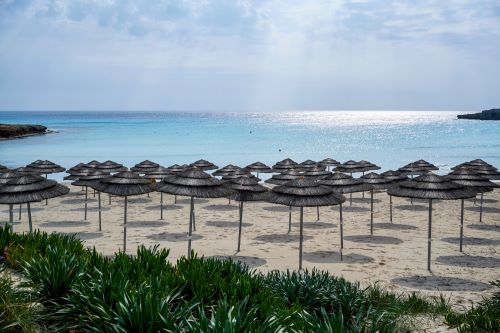
Mallorca Weather: 30-Day Overview
Obtaining a 30-day weather overview for Mallorca can be particularly useful when planning a trip or activities on the island. The 30-day weather forecast for Mallorca provides insight into expected temperatures, sunshine hours, rainfall probability, and notable weather phenomena that may occur during this period.
Für detaillierte Vorhersagen empfehlen wir, spezialisierte Wetterdienste oder Apps zu verwenden. Alternativ findest du hier eine aktuelle Wetterübersicht für die nächsten 30 day weather mallorca.
Mallorca Weather: April
The weather in Mallorca in April feels like a true spring awakening, with warmer temperatures and abundant sunshine hours transforming the island into a vibrant paradise. Average temperatures now range between 11°C in the early morning and reach pleasant highs of up to 20°C in the afternoon. This temperature rise invites extended outings, making April a perfect month to explore Germany’s favourite island.
With an average of 8 hours of sunshine per day, April offers plenty of opportunities to experience the island in all its glory. While occasional showers may still occur, they are usually brief and contribute to the freshness and blooming of the landscape. The natural surroundings are in full bloom, and the milder temperatures are ideal for hiking, cycling, and coastal walks.
April is also a time of diverse cultural events, from Easter celebrations to local festivals, providing a wonderful opportunity to immerse yourself in Mallorca’s traditions and social life.
In summary, April in Mallorca is a lively and energetic time, ideal for visitors who want to enjoy pleasant weather, stunning nature, and the island’s rich cultural offerings outside the peak tourist season.
👉 Renting a Beach Cart or a child seat for children aged 3+ in Mallorca with RentalPanda!
Mallorca Weather: May
May in Mallorca brings full spring splendour! The warmer summer months are just around the corner. The island is bathed in vibrant green, and temperatures rise noticeably, creating ideal conditions for all kinds of leisure activities.
Average temperatures now range between a pleasant 14°C in the morning and reach highs of around 23°C in the afternoon, making the days perfect for extended exploration.
With up to 9 hours of sunshine per day, May provides ample light and warmth to enjoy Mallorca’s magnificent landscapes. The island is in full bloom, and the warm temperatures invite beach walks, mountain hikes, and relaxed evenings in lively towns.
Rainfall probability in May is lower compared to previous months, making activity planning easier. The rare rainy days provide a refreshing break. The sea becomes more inviting, with temperatures ranging between 18°C and 20°C, ideal for the first swims of the year or water sports like sailing, kayaking, and stand-up paddling.
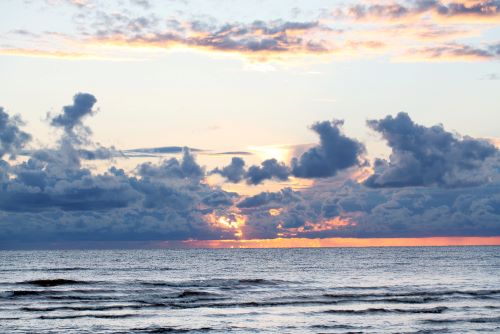
Mallorca Weather: June
June in Mallorca marks the start of summer, welcoming visitors with long, sunny days and a noticeable rise in temperatures. This month is a delightful time to fully enjoy Mallorca, as the climate is now ideal for nearly any activity under the Mediterranean sun.
Average temperatures range between 18°C in the early morning and reach pleasant highs of around 26°C in the afternoon, making June one of the most popular months for a visit.
With an average of 10 hours of sunshine per day, June offers long days perfect for extended beach visits, hikes, and explorations. The island is inviting, with lush landscapes and vibrant towns and villages buzzing with energy and life.
Die Niederschlagswahrscheinlichkeit im Juni ist noch geringer als im Mai, was kontinuierlich sonnige Tage fast garantiert und die Planung von Ausflügen und Veranstaltungen erleichtert. Diese trockenen Bedingungen bedeuten jedoch auch, dass du dich immer ausreichend hydratisierst und Sonnenschutz verwendest, um den Urlaub unbeschwert genießen zu können.
The sea reaches comfortable swimming temperatures, making it a perfect time for swimming, snorkelling, and a variety of water sports. Mallorca’s beaches come alive but still offer plenty of space to enjoy relaxed moments by the sea.
Mallorca Weather: Are There Bathing Bans in Certain Months?
In Mallorca, temporary bathing bans may be imposed for various reasons. One example is the presence of dangerous jellyfish, such as the Portuguese Man o’ War (Physalia physalis), spotted in certain areas. These bans are put in place to protect public safety, shielding beachgoers from the risks of contact with these stinging creatures. Such bans are typically short-term and lifted once the danger has passed.
Additionally, bathing bans may be enforced due to storm risks. These bans are a direct response to heightened safety concerns caused by strong winds, high waves, and adverse weather conditions during storms. For instance, heavy rainfall led Palma’s city administration to close all beaches in the city area to bathers to ensure public safety.
Moreover, during severe storms, warning levels such as Orange Alert may be issued to caution about very high waves. In such cases, pedestrians on seafront promenades are advised to exercise extra caution, as there’s a risk of being swept into the sea by a large wave.
Diese Maßnahmen dienen dem Schutz der Öffentlichkeit vor den potenziellen Gefahren, die durch extreme Wetterbedingungen verursacht werden können. Solche Badeverbote werden in der Regel kurzfristig und basierend auf aktuellen Wetterwarnungen und -bedingungen verhängt. Daher ist es wichtig, dass du während deines Aufenthalts auf Mallorca die lokalen Wettervorhersagen und Warnungen beachtest, insbesondere in den Herbst- und Wintermonaten, wenn Stürme häufiger entstehen und auch vermehrt Quallen auftreten.
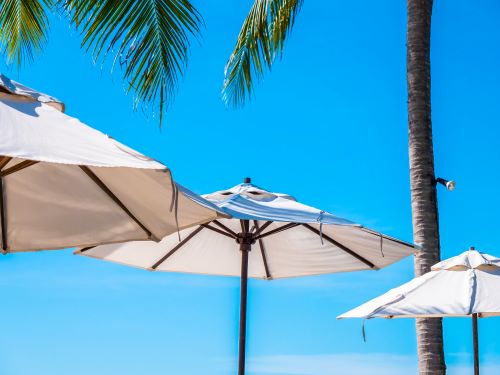
Mallorca Weather: July
July in Mallorca epitomises the Mediterranean summer with long, sunny days and warm to hot temperatures, characteristic of the peak tourist season. Average temperatures in July range from a pleasant 20°C in the early morning to a hot 30°C or more in the afternoon, making it a perfect month for all kinds of summer activities, from sunbathing and swimming at Mallorca’s stunning beaches to water sports and exploring the diverse landscape.
With an average of 11 hours of sunshine per day, July offers plenty of daylight to fully enjoy the island. Rainfall is very unlikely this month, with only a few days where precipitation might occur.
The seawater reaches comfortable bathing temperatures, ideal for extended splashing in the Mediterranean. The beaches are lively, attracting visitors from around the world who enjoy the clear, blue waters.
Despite the heat, a sea breeze provides pleasant conditions, especially in coastal areas. For visitors looking to escape the heat, trips to Mallorca’s mountains offer cooler temperatures and lush landscapes, perfect for hiking and nature exploration.
👉 Jetzt Hire Affordable Car Seats or How long does it take to fly to Mallorca, with RentalPanda!
Mallorca Weather: August
In August, Mallorca offers high temperatures and sunny days across the island. The average temperature is around 24°C, with highs reaching approximately 25°C in the southwestern areas and western beaches of Palma Bay. In the mountain regions, particularly around Puig Major, temperatures can drop to 19°C, providing a refreshing escape.
August is marked by long days with an average of 11 hours of sunshine, while rainfall remains minimal. The highest rainfall, about 45 mm, is recorded in the Serra de Tramuntana, while the southeastern coasts of Mallorca see the least, around 19 mm.
The sea is pleasantly warm, with temperatures between 24°C and 26°C, inviting a range of water sports activities. From beach parties and water sports like jet skiing and windsurfing to cultural events and sunrise hikes, August offers countless ways to enjoy the island in its full splendour.
For an August holiday, pack light summer clothing, swimwear, a sunhat, sunscreen, and comfortable sandals or flip-flops to make the most of the warm, sunny days. Mallorca in August is perfect if you love sunshine, warm seawater, and a wide array of leisure activities.
Mallorca Weather: Are Beaches Closed? Current Overview
Auf Mallorca können Strände aus verschiedenen Gründen temporär gesperrt werden, z.B. aufgrund von Umweltverschmutzung nach starken Regenfällen oder Problemen mit den Kläranlagen. Auch mussten schon nach langanhaltenden Niederschlägen alle Strände in Palma für Badegäste gesperrt werden, da Abwässer in die Bucht gelangten.
Such incidents highlight the importance of checking current reports and water quality updates before planning to swim at the beaches.
For real-time information on whether a Mallorca beach is closed and the general beach situation, check: Balearic Beaches.
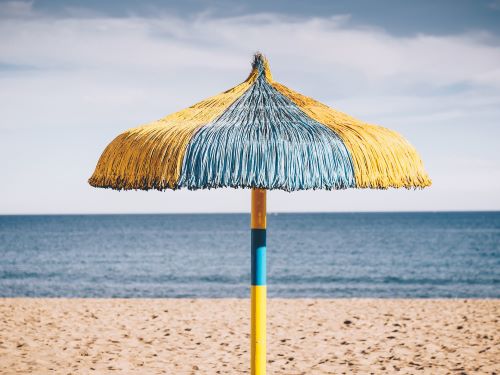
Mallorca Weather: September
In September, Mallorca offers a pleasant mix of warm days and cooler evenings. Average temperatures hover around 22°C, with highs reaching up to 26°C. At night, temperatures may drop to about 17°C. This creates perfect conditions for visitors who want to enjoy the sea, which invites swimming with average temperatures of 23°C to 26°C, or explore the island through hiking, cycling, and cultural experiences.
September is known for its stable weather conditions with fewer tourists than the peak summer months. Activities like hiking in the Tramuntana Mountains, cultural trips to historic towns like Palma, Valldemossa, or Alcúdia, and wine tastings at local vineyards are particularly popular. The month also offers ideal conditions for water sports such as sailing, diving, and snorkelling.
Despite the pleasant temperatures, occasional rainy days can occur in September, especially in the Serra de Tramuntana, where rainfall is higher. The average rainfall is around 59 mm, indicating that short showers may occur but typically pass quickly, not dampening your holiday enjoyment.
For travellers visiting Mallorca in September, it’s recommended to pack light and versatile clothing to be prepared for warm days and cooler evenings. Swimwear is a must, as is a light jumper or jacket for the evening hours. A lightweight raincoat can also be useful to handle occasional showers.
👉 Du willst DRIVE TO MALLORCA WITH YOUR CAR ? You need a Bed Rail? Find out more here!
Mallorca Weather: October
In October, Mallorca enjoys a pleasant autumn climate, ideal for a wide range of activities, from hiking and cycling to culinary discoveries and wine tastings. Average temperatures range between 17°C and 18°C, with highs reaching up to 22°C in some areas. Evenings and nights can be cooler, with average lows around 13°C.
October is also a great time to visit autumn markets, participate in cooking classes, or enjoy art and culture. While the weather is generally pleasant, rain can occur, particularly in the mountain regions, where an average of 122 mm is recorded. Nonetheless, October has relatively few rainy days, making it an optimal time for many to visit.
Past experiences show that October in Mallorca can vary greatly. Some years have seen unusually high rainfall and rapid temperature drops, while others have offered late-summer warmth and plenty of sunshine. Most holidaymakers experience pleasant days with temperatures ideal for outdoor activities, and the seawater is often still warm enough for swimming.
Can You Still Swim in Mallorca in October?
In Mallorca, you can usually still swim in October. The water temperatures remain pleasant, offering a great opportunity to enjoy the beaches and the sea. The average sea temperature ranges between around 23°C and 24°C, which is comfortable for most people.
This makes swimming in the sea, as well as other water sports activities like snorkelling and diving, quite enjoyable. However, it’s worth noting that the weather in October can vary, and storms may occur. It’s advisable to thoroughly check current weather forecasts to plan the best days for beach visits.
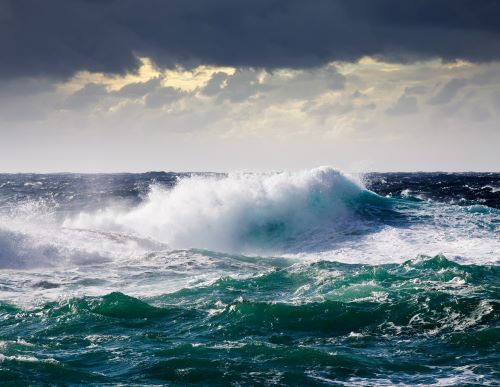
Mallorca Weather: November
In November, Mallorca offers a variety of activities for visitors as the island is bathed in autumnal colours. From hiking in picturesque landscapes to cultural explorations in historic towns and enjoying culinary delights, November provides many ways to enjoy the island. Temperatures are mild, with averages ranging from 13°C to 15°C, and highs reaching up to 18°C on the southeastern beaches.
Obwohl das Wetter im November wechselhafter sein kann, mit einer durchschnittlichen Niederschlagsmenge von 77 mm und möglichen Regentagen, bietet die Insel immer noch viele sonnige Tage, die zum Erkunden einladen. Du kannst dich im November also auf mildes, aber wechselhaftes Wetter einstellen und entsprechend Kleidung in Schichten packen, einschließlich wärmerer Kleidung für kühlere Abende und leichter Jacken oder Mäntel.
A lightweight raincoat is also advisable to be prepared for occasional showers. Despite cooler sea temperatures, hardy souls may still enjoy a refreshing dip in the sea. Overall, November marks the start of the cooler season, yet Mallorca remains an attractive destination. It’s the perfect time to experience the island in a quieter, less crowded state and discover authentic Mallorcan culture.
Mallorca Weather: December
In December, Mallorca offers a range of activities and experiences despite cooler temperatures. Average temperatures hover around 11°C to 12°C, with highs reaching up to 15°C in southwestern and eastern coastal areas. At night, temperatures can drop to 6°C to 8°C, particularly in the northwest around Puig Major. It can be rainier than other months, with average rainfall ranging from 48 mm to 104 mm, depending on the region.
Despite lower temperatures, there’s plenty for visitors to discover and enjoy. Activities include visiting Christmas markets, Christmas shopping, exploring historic sites and museums, savouring Mallorcan cuisine, relaxing beach walks, wellness treatments, and hiking to explore natural beauty. While swimming in the sea is unlikely, the island still offers ample opportunities for a pleasant stay.
Sunglasses are recommended for the sunny days that can still occur, even in winter. Mallorca in December is ideal for those wanting to experience the island outside the peak season, with a cooler but still pleasant climate offering numerous opportunities for cultural, culinary, and nature-based activities.
👉 Bist du in deiner Mobilität eingeschränkt? Wheelchair hire in Mallorca!
FAQ
Yes, storms can occur in Mallorca, including Palma, particularly during the autumn and winter months. During this time, heavy rainfall, storms, and occasionally hail are possible. While storms are not frequent, it’s advisable to check the weather forecast if you’re visiting the island during these seasons.
In Alcudia, you’ll enjoy warm summers and mild winters. The summer months bring high temperatures and plenty of sunshine, ideal for beach visits and water sports. In winter, temperatures in Alcudia are cooler but still pleasant for walks and exploration.
Cala Millor boasts a typical Mediterranean climate with hot, dry summers and mild, wetter winters. The summer months are perfect for sunbathers and sea lovers, while winters are ideal for hiking and sightseeing with comfortably cool temperatures.
Peguera, like the rest of Mallorca, enjoys a mild climate with hot summers and mild winters. The summer months are great for swimming and extensive island excursions. In winter, lower temperatures make the area perfect for hiking and exploring nature.
Yes, Mallorca can experience flooding, particularly in the autumn months. Heavy rainfall often leads to rapid flooding, especially in low-lying areas and near riverbeds. You should pay attention to local weather warnings, especially during the autumn and winter months.


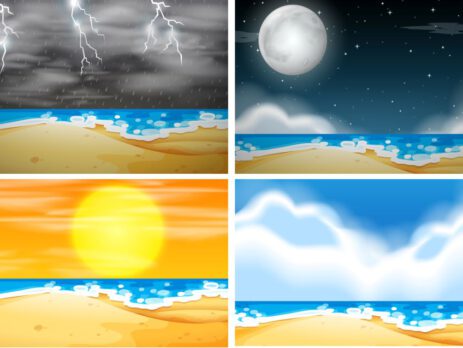
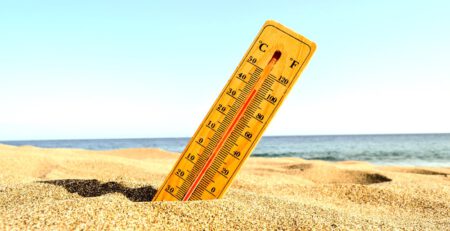
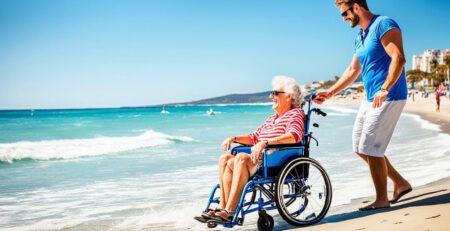




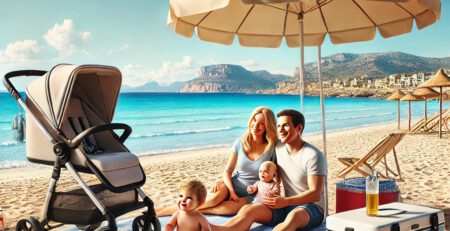



Write a comment